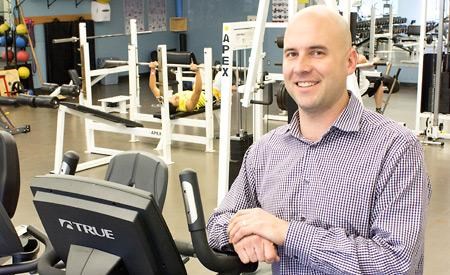It is that time of year again. After a December full of indulgence most Canadians are looking to shed a little holiday weight, reconsider their lives and start the year off right.
To many it is a natural time to break bad habits and create new healthy ones. Whether that involves improved eating, losing weight or financial security, a majority of Canadians resolve to make some kind of life change. But while the idea of making changes seems appealing, the proposition is usually more difficult than what it first seems.
It is with the greatest intention that these commitments are made; the problem is making them stick.
Staff at Powell River Recreation Complex report that each January they see a bump in the numbers of people buying passes and going to drop-in classes. It does not take long though before things go back to normal.
Dr. Paul Martiquet is medical health officer for rural Vancouver Coastal Health. “Starting a fitness program is one of the best things you can do for your health,” said the doctor. “Physical activity can reduce your risk of chronic disease, improve balance and coordination, help you lose weight—even improve your sleeping habits and self-esteem.”
But he added that it is not enough to just want to exercise—people need to have a specific strategy “to get and keep us going.”
Plans built around a vague idea without clear sets of action are hard to follow, said Martiquet. Setting a goal with a number of smaller milestones, as well as understanding the reasons and benefits of meeting it, help to make it easier to stay on track.
Obstacles are often a downfall of good intentions. “There’s always something,” he said. “The common excuse is lack of time.”
However, in answer to that there are things people can do to incorporate more physical activity in their lives that do not include 6 am visits to the gym for fitness classes, he said.
“Getting up earlier, admittedly is not for everyone,” he said, but people can “choose to drive less and walk more.”
Setting a consistent appointment can make a great difference, he added. Consistency is the first and most important step, he said.
The doctor also suggested replacing one habit with another: watching less TV or surfing a little less online and using commercial breaks to do a few sit ups would not hurt, he said.
“Setting one’s self up for success is not complicated,” he added. “If you find you’re not able to meet your goals, change them to make them more possible,” he said. “Don’t try for the Olympics right off the bat—take baby steps and you’re less likely to be intimidated.”
Psychologists suggest that for a healthy habit to stick, it may take doing that activity between 30 to 45 times before the change becomes incorporated into daily life. It does not happen overnight.
Martiquet added that over time people will find themselves pushing themselves a little harder and doing more without even noticing.
To fight boredom and fear of past failures he suggested people choose enjoyable activities, like hiking, biking or playing a fun sport. Just as important to success is to participate with friends for motivation and try out new things.
“Start with the fun stuff, then add in some friends or a partner to make it competitive, or not,” he said.
He suggested that having a dog can be a great motivator to build more activity into the day though regular walks or runs depending on the dog.
Sometimes new toys make all the difference, he said, adding that some people find motivation in fitness-related electronics and “great workout clothes and shoes.”
Rewards for hard work, though not food, can also help keep people on track.
“Doing something consistently is an accomplishment, even if your actual task seems small and insignificant,” said Martiquet. “Don’t forget to pat yourself of the back.”
For those who are already active and looking to try something new, the national organization for fitness professionals, canfitpro, released the results of its first national fitness trends survey. The organization asked its membership which trends will have the greatest impact on the health and wellness of Canadians in 2015. High-intensity interval training, functional fitness and older adult training programs were predicted to be most effective.
“High-intensity interval training, which includes periods of intense exercise followed by durations of rest, was voted the number one most effective trend because this approach to training generates significant and noticeable results when it comes to heart health, reduced body fat and addressing the risk of many chronic diseases,” said Rod MacDonald, canfitpro vice-president. “Functional fitness came in a close second because it links directly to our lifestyles as Canadians. It includes natural body movements like squats and dead lifts that help us prepare for the rigours of daily life—things like shovelling snow or carrying groceries. It’s no surprise that fitness for older adults came third. This area is increasingly popular because of the aging-but-active Baby Boomers.”
Powell River gyms, studios and recreation complex offer fitness classes for all ages, abilities and budgets whether it be yoga, Pilates, cross-fit or high-intensity interval training.
City hires recreation manager
City of Powell River Parks, Recreation and Culture has hired Neil Pukesh as manager of recreation. Pukesh, who has worked as interim manager since the fall, started his new permanent position Tuesday, January 6.
Pukesh has an extensive background in managing both private and publicly run sports facilities. His most recent position was working for the City of Coquitlam as the operations manager for Poirier Sport and Leisure Complex and before that as general manager for Canlan Ice Sports Burnaby 8 Rinks.
He said he is excited to make the move up to Powell River and is looking forward to this “great career opportunity.”
Pukesh added that the range of outdoor activities Powell River offers was definitely a draw for him. His family’s plan is to move from the Lower Mainland after the current school year concludes.



